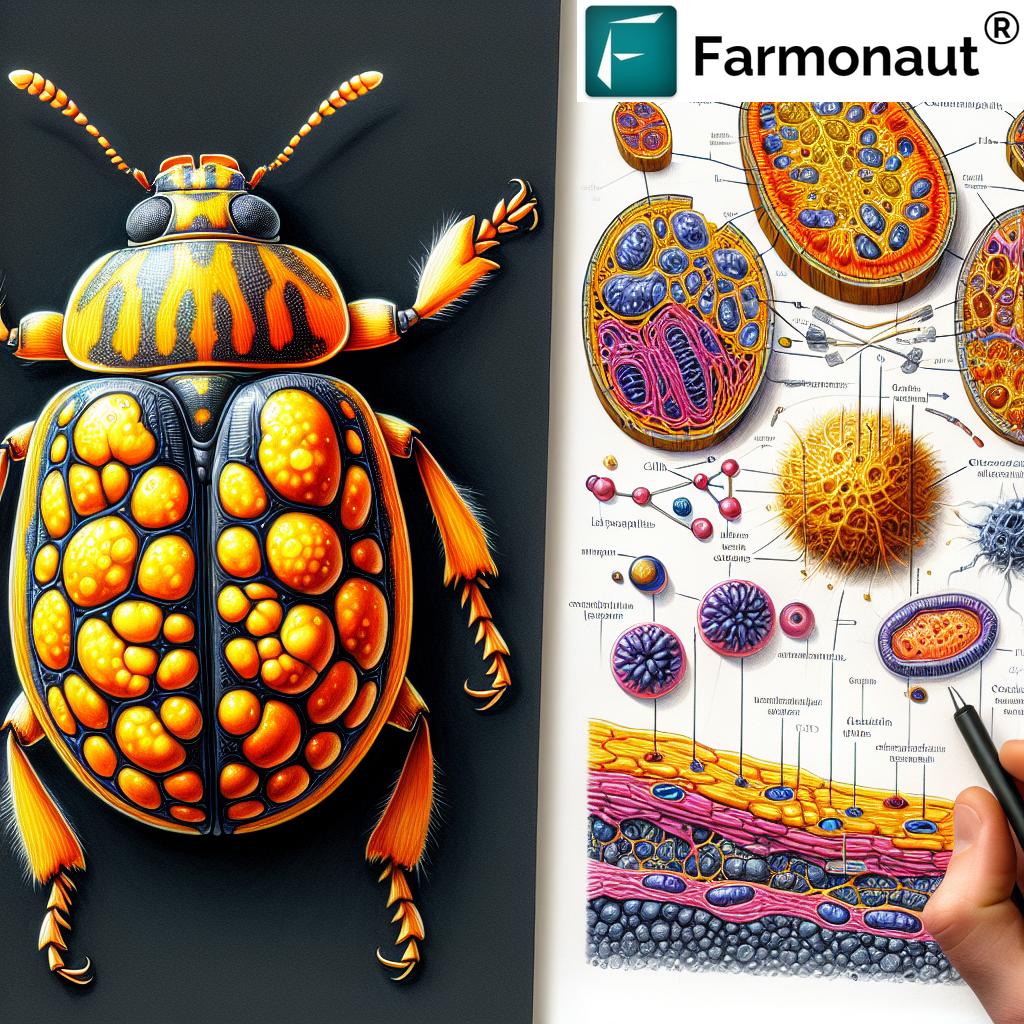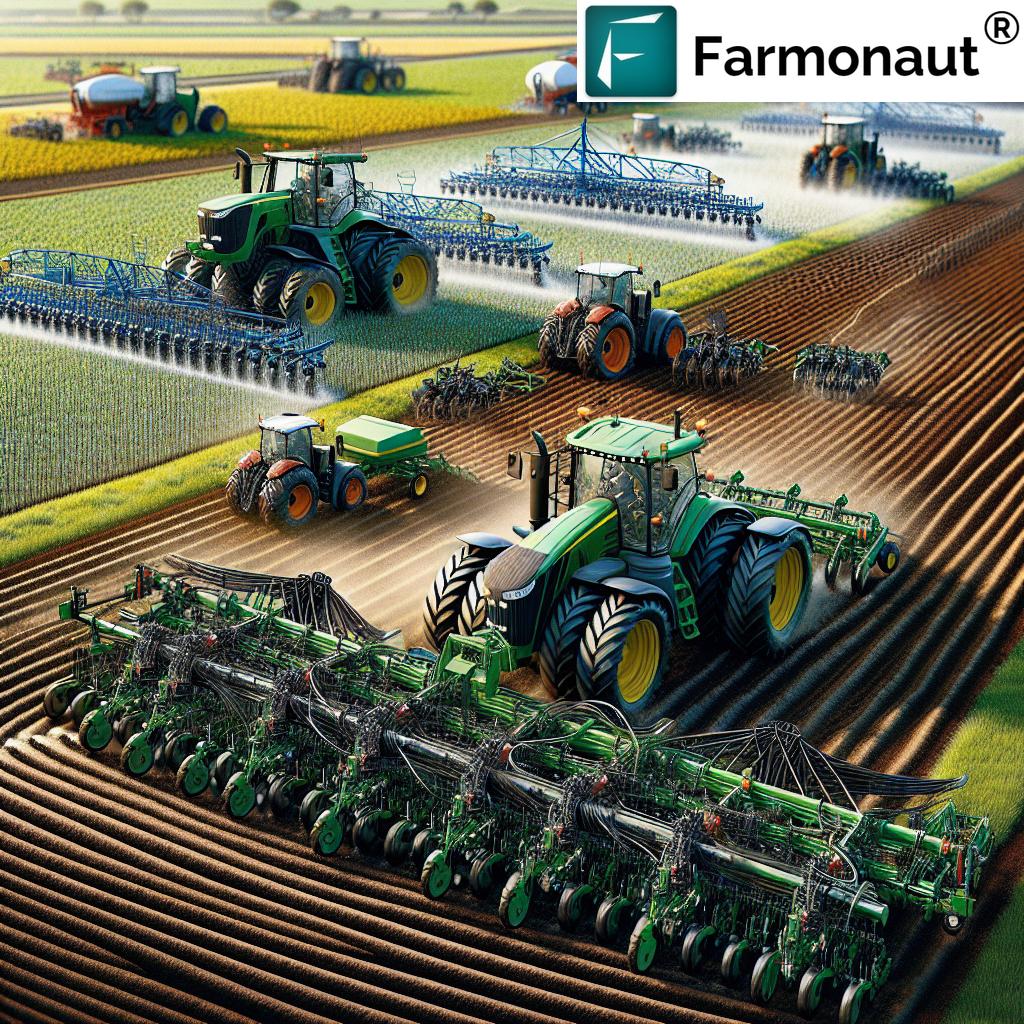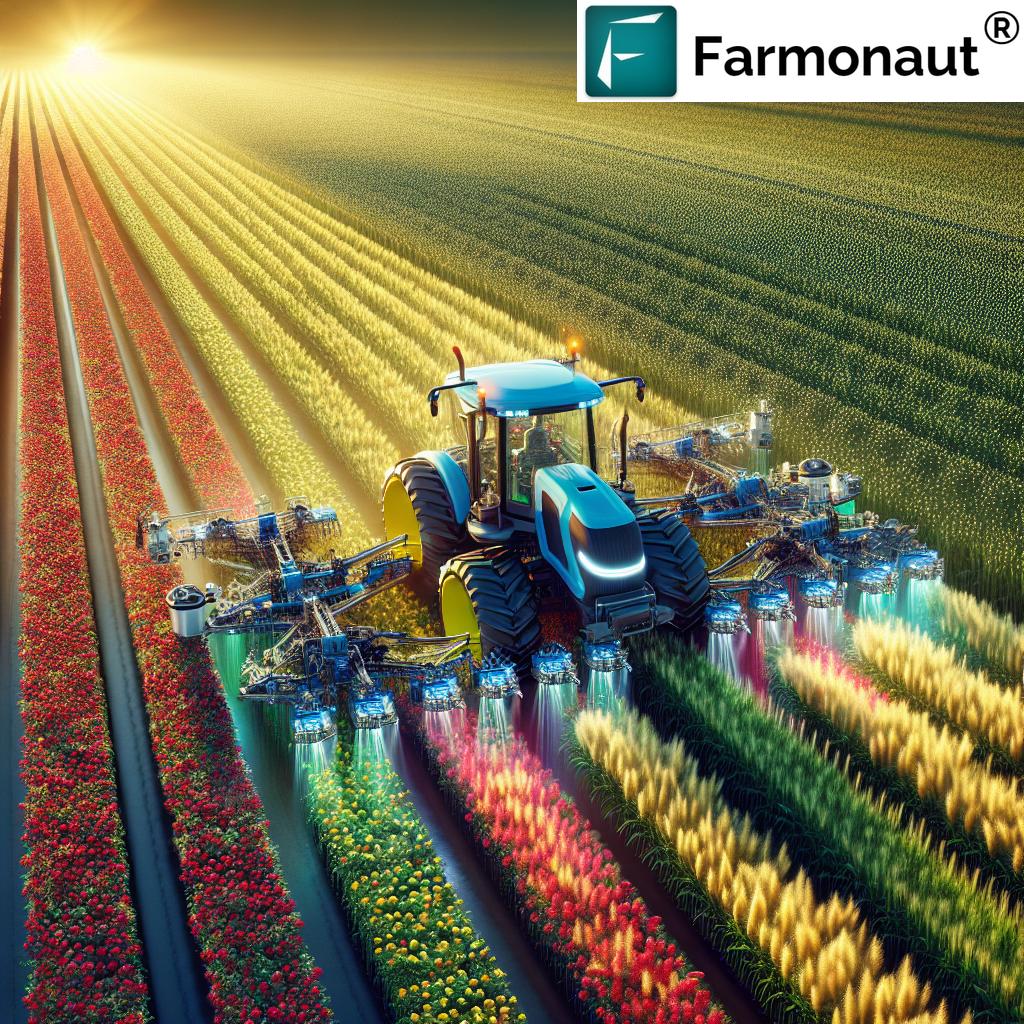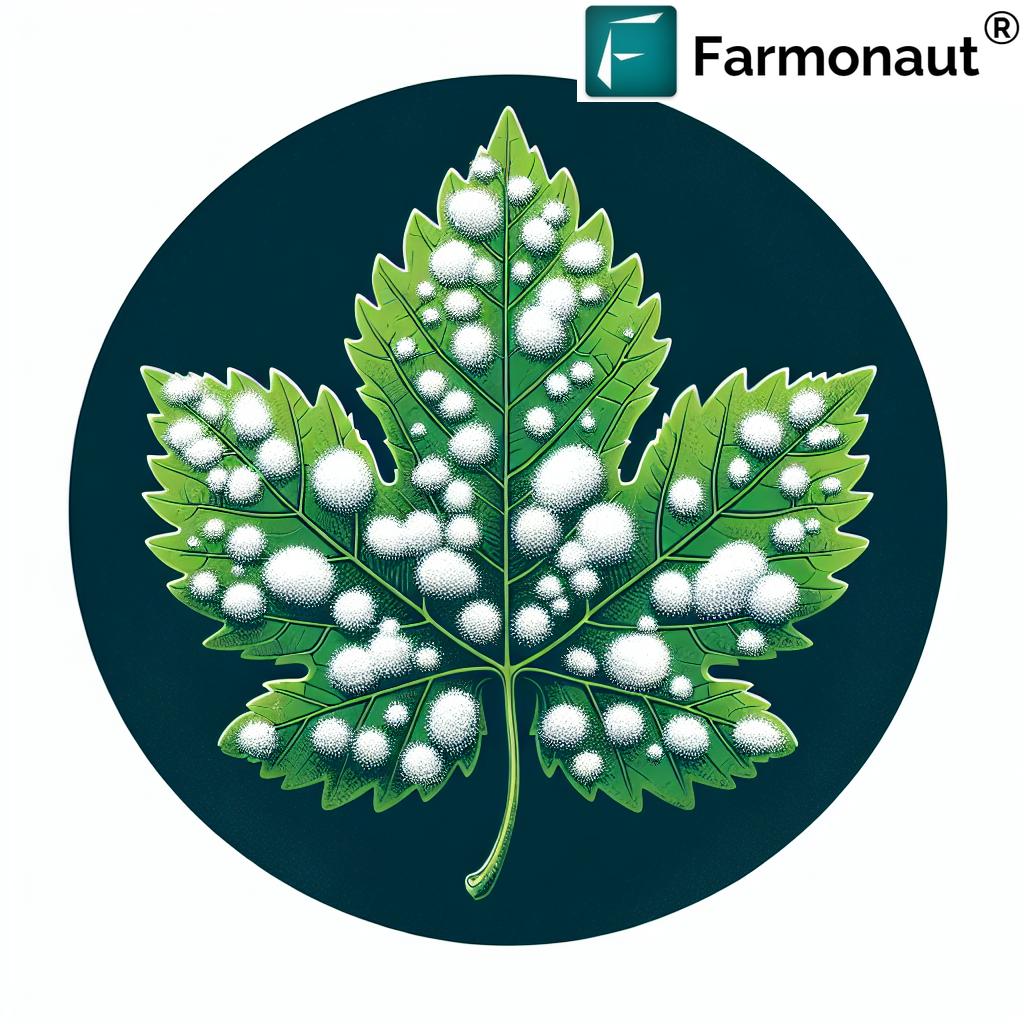Mastering Potato Growing: From Planting to Pest Control – A Complete Guide for Healthy, Disease-Free Crops
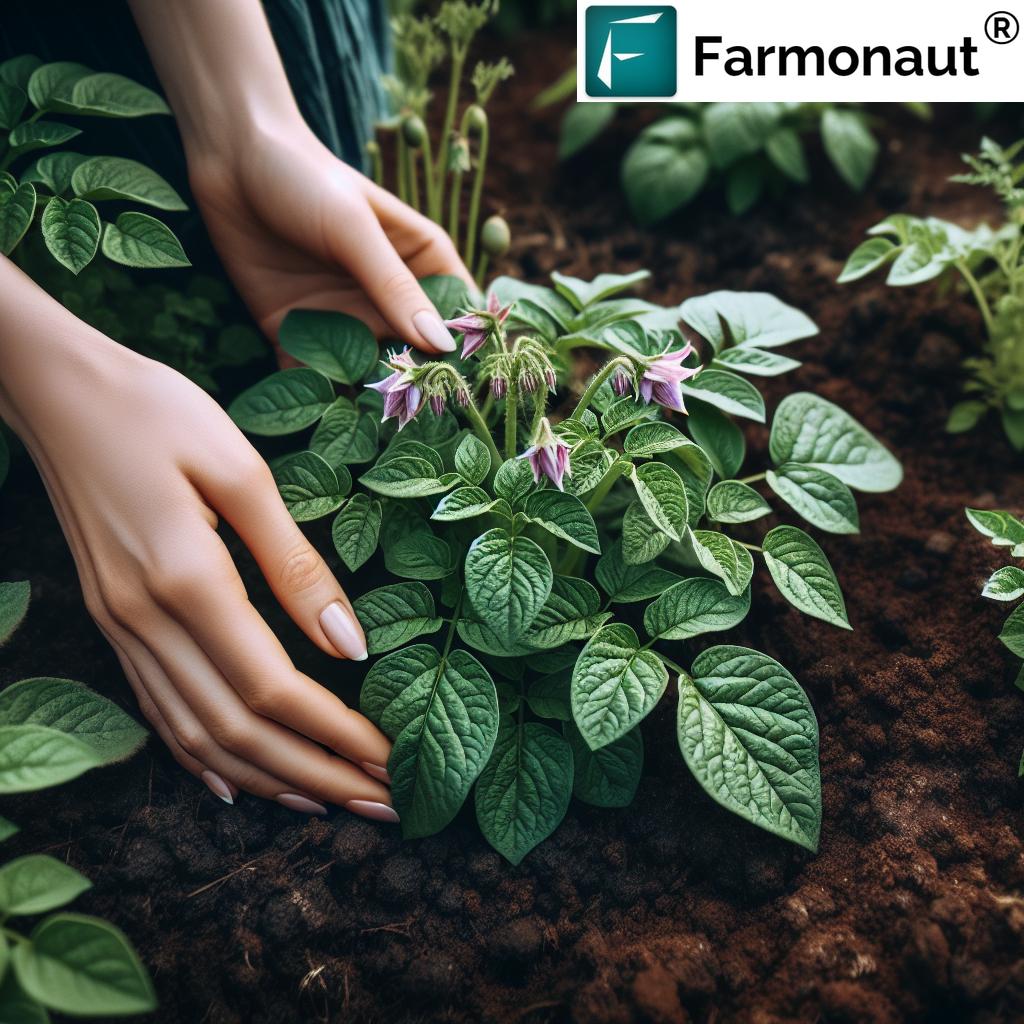
Welcome to our comprehensive guide on mastering potato growing! At Farmonaut, we’re passionate about helping farmers achieve the best possible yields while maintaining sustainable practices. In this blog post, we’ll take you through every step of the potato growing process, from choosing the right varieties to dealing with common diseases and pests. Whether you’re a seasoned farmer or a beginner looking to start your first potato plot, this guide has something for everyone.
1. Choosing the Right Potato Varieties
Selecting the appropriate potato varieties is crucial for a successful harvest. Different varieties are suited to various climates, soil types, and culinary purposes. Here are some popular potato varieties to consider:
- Russet Potatoes: Ideal for baking and frying
- Yukon Gold: Excellent all-purpose potato with a buttery flavor
- Red Potatoes: Great for boiling and roasting
- Fingerling Potatoes: Perfect for gourmet dishes
- Purple Potatoes: Rich in antioxidants and visually striking
When choosing your varieties, consider factors such as disease resistance, growing season length, and intended use. Our Farmonaut app can help you identify the best varieties for your specific region and climate conditions. Download our Android app or get it on iOS to access this feature and more.
2. Preparing the Soil for Planting
Proper soil preparation is essential for healthy potato growth. Follow these steps to ensure your soil is ready for planting:
- Soil Testing: Conduct a soil test to determine pH levels and nutrient content. Potatoes prefer slightly acidic soil with a pH between 5.8 and 6.5.
- Tilling: Loosen the soil to a depth of 8-12 inches to promote good root development.
- Adding Organic Matter: Incorporate well-rotted compost or aged manure to improve soil structure and fertility.
- Adjusting pH: If necessary, add lime to raise pH or sulfur to lower it based on your soil test results.
- Creating Raised Beds: If your soil is heavy or poorly drained, consider creating raised beds to improve drainage.
Our Farmonaut satellite system can help you monitor soil moisture levels throughout the growing season, ensuring optimal conditions for your potato crop. Learn more about our satellite monitoring services.
3. Planting Potatoes
Now that your soil is prepared, it’s time to plant your potatoes. Here’s how to do it right:
- Timing: Plant potatoes 2-3 weeks before the last expected frost date in your area.
- Seed Preparation: Use certified seed potatoes to ensure disease-free plants. Cut larger potatoes into 2-inch pieces, each with at least one “eye” or sprout.
- Planting Depth: Plant seed potatoes 3-4 inches deep and 12-15 inches apart in rows spaced 3 feet apart.
- Orientation: Place the cut side down, with the eyes facing upward.
- Hilling: As the plants grow, mound soil around the stems to protect developing tubers from sunlight.
For container growing, choose a large pot or grow bag at least 16 inches deep and wide. Use a high-quality potting mix and plant 2-3 seed potatoes per container.
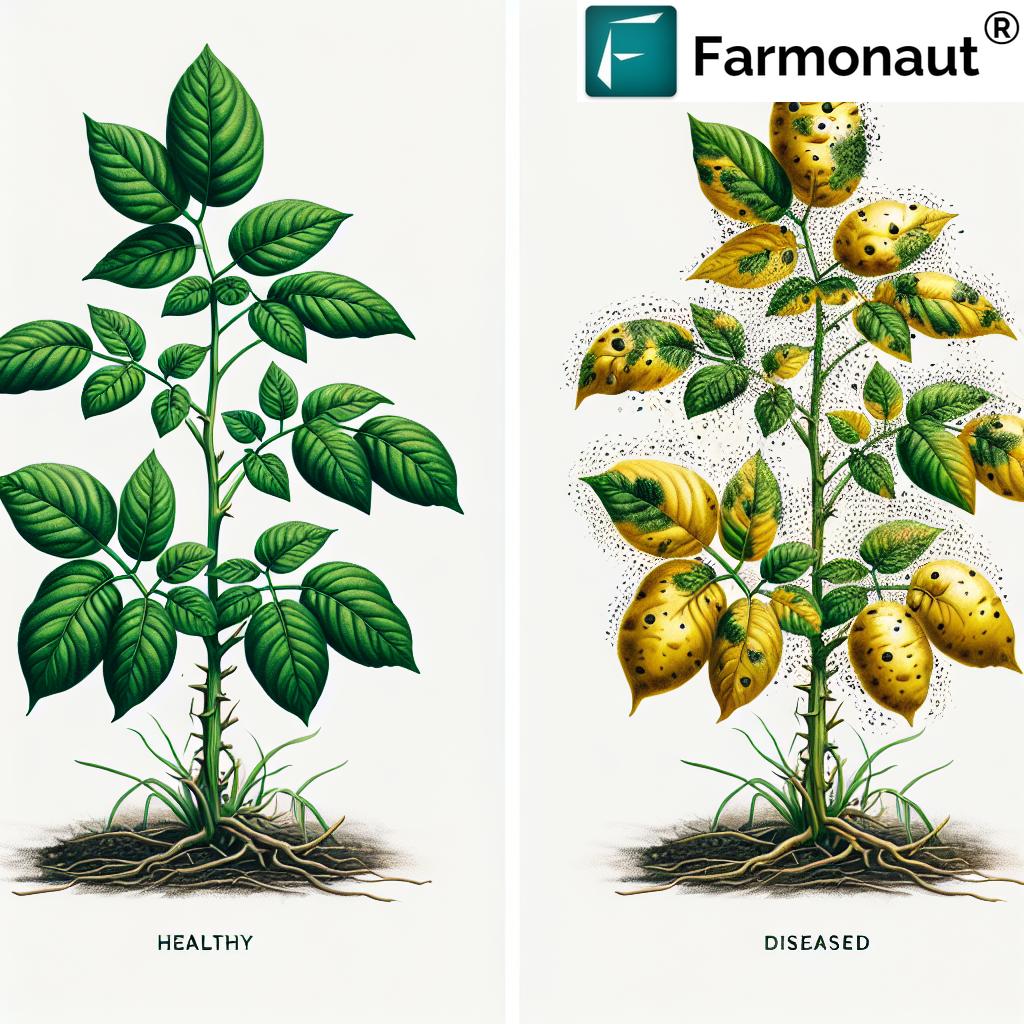
4. Caring for Your Potato Plants
Proper care is essential for healthy potato growth and high yields. Here are the key aspects of potato plant care:
4.1 Watering
Potatoes require consistent moisture throughout the growing season. Here are some watering tips:
- Provide 1-2 inches of water per week, adjusting based on rainfall.
- Water deeply to encourage deep root growth.
- Avoid overwatering, as it can lead to disease and rot.
- Use mulch to retain soil moisture and suppress weeds.
Our Farmonaut satellite system can help you monitor soil moisture levels and provide precise irrigation recommendations. Learn more about our API for developers.
4.2 Fertilizing
Potatoes are heavy feeders and benefit from regular fertilization:
- Apply a balanced fertilizer (10-10-10) at planting time.
- Side-dress with nitrogen-rich fertilizer when plants are 4-6 inches tall.
- Avoid excessive nitrogen, which can promote foliage growth at the expense of tuber development.
- Consider using organic fertilizers like compost tea or fish emulsion for a more sustainable approach.
4.3 Weed Control
Keeping your potato plot free of weeds is crucial for optimal growth:
- Mulch around plants to suppress weed growth.
- Hand-pull weeds regularly, being careful not to disturb potato roots.
- Use shallow cultivation techniques to avoid damaging developing tubers.
- Consider using cover crops in the off-season to improve soil health and reduce weed pressure.
5. Common Potato Diseases and Prevention
Potatoes are susceptible to various diseases that can significantly impact yield and quality. Here are some common potato diseases and prevention strategies:
5.1 Late Blight
Symptoms: Dark water-soaked spots on leaves, stems, and tubers; white fuzzy growth on the undersides of leaves.
Prevention:
- Plant resistant varieties
- Maintain good air circulation
- Avoid overhead watering
- Apply fungicides preventatively in high-risk areas
5.2 Early Blight
Symptoms: Dark brown spots with concentric rings on lower leaves; yellowing and leaf drop.
Prevention:
- Practice crop rotation
- Remove infected plant debris
- Use drip irrigation to keep foliage dry
- Apply organic fungicides like copper or sulfur
5.3 Potato Scab
Symptoms: Rough, corky lesions on tuber skin.
Prevention:
- Maintain soil pH below 5.5
- Avoid adding fresh manure to the soil
- Plant resistant varieties
- Practice crop rotation with non-host plants
5.4 Bacterial Soft Rot
Symptoms: Soft, watery decay of tubers; foul odor.
Prevention:
- Avoid wounding tubers during harvest
- Ensure proper storage conditions
- Practice good sanitation in storage areas
- Avoid planting in poorly drained soils
Our Farmonaut satellite system can help detect early signs of disease by monitoring crop health indicators. This allows for timely intervention and prevention of widespread damage. Check out our API documentation for more details.
6. Dealing with Potato Pests
Pests can cause significant damage to potato crops. Here are some common potato pests and strategies for managing them:
6.1 Colorado Potato Beetle
Symptoms: Defoliation of plants; both adults and larvae feed on leaves.
Management:
- Handpick beetles and larvae
- Use row covers to prevent infestation
- Apply organic insecticides like neem oil or spinosad
- Encourage natural predators like ladybugs and lacewings
6.2 Potato Aphids
Symptoms: Curling and yellowing of leaves; stunted growth.
Management:
- Spray plants with a strong stream of water to dislodge aphids
- Use insecticidal soaps or neem oil
- Introduce beneficial insects like ladybugs or parasitic wasps
- Remove and destroy heavily infested plants
6.3 Wireworms
Symptoms: Small holes in tubers; tunneling damage.
Management:
- Rotate crops with non-host plants
- Use bait crops like wheat or corn to lure wireworms away
- Apply beneficial nematodes to the soil
- Avoid planting in fields with a history of wireworm infestation
Our Farmonaut app provides real-time alerts for potential pest outbreaks based on weather conditions and historical data. This allows for proactive pest management strategies.
7. Harvesting and Storing Potatoes
Proper harvesting and storage techniques are crucial for maintaining the quality of your potato crop:
7.1 Harvesting
- Wait until the plant foliage has died back naturally or after frost.
- Dig carefully to avoid damaging tubers.
- Allow harvested potatoes to dry for a few hours in the sun to toughen the skin.
- Handle gently to prevent bruising.
7.2 Storing
- Cure potatoes at 50-60°F (10-15°C) and high humidity for 1-2 weeks.
- Store in a cool, dark place at 35-40°F (2-4°C) with high humidity.
- Check regularly for signs of rot or sprouting.
- Avoid storing near apples or other ethylene-producing fruits.
8. Sustainable Potato Farming Practices
At Farmonaut, we’re committed to promoting sustainable farming practices. Here are some ways to make your potato growing more environmentally friendly:
- Cover Cropping: Plant cover crops between potato rotations to improve soil health and reduce erosion.
- Integrated Pest Management (IPM): Use a combination of biological, cultural, and chemical controls to manage pests and diseases.
- Water Conservation: Implement efficient irrigation systems and use mulch to reduce water consumption.
- Organic Fertilizers: Utilize compost, green manures, and other organic fertilizers to build soil health.
- Biodiversity: Encourage beneficial insects and pollinators by planting diverse crops and maintaining natural habitats.
Our Farmonaut satellite system can help you implement these sustainable practices by providing accurate data on crop health, soil moisture, and weather patterns. This allows for more precise resource management and reduced environmental impact.
9. Comparing Traditional Potato Monitoring with Farmonaut Satellite System
| Feature | Traditional Methods | Farmonaut Satellite System |
|---|---|---|
| Disease Detection | Visual inspection, often delayed | Early detection through spectral analysis |
| Irrigation Scheduling | Based on experience or basic soil moisture testing | Precise scheduling based on real-time soil moisture data |
| Yield Estimation | Manual sampling and estimation | AI-powered yield prediction using satellite imagery |
| Pest Monitoring | Regular field scouting | Early warning system based on weather data and crop health indicators |
| Nutrient Management | Periodic soil testing and visual assessment | Continuous monitoring of crop health for targeted fertilization |
As you can see, the Farmonaut Satellite System offers significant advantages over traditional monitoring methods, allowing for more precise and timely interventions throughout the growing season.
10. Delicious Potato Dishes to Try
Now that you’ve grown your own potatoes, here are some delicious dishes to showcase your harvest:
- Crispy Roasted Potatoes: Toss with olive oil, rosemary, and garlic before roasting.
- Creamy Mashed Potatoes: Add butter, milk, and chives for a classic side dish.
- Potato Gratin: Layer thin slices with cream and cheese for a decadent treat.
- Potato Soup: Blend with leeks and cream for a comforting meal.
- Potato Salad: Mix with mayonnaise, mustard, and herbs for a summer favorite.
FAQ Section
Q1: How long does it take for potatoes to grow?
A1: Most potato varieties take 70-120 days from planting to harvest, depending on the variety and growing conditions.
Q2: Can I grow potatoes in containers?
A2: Yes, potatoes can be successfully grown in containers. Choose a container at least 16 inches deep and wide, use a high-quality potting mix, and ensure proper drainage.
Q3: How do I know when my potatoes are ready to harvest?
A3: Potatoes are typically ready to harvest when the plant foliage begins to yellow and die back. For new potatoes, you can begin harvesting when the plants are still green but flowering.
Q4: What causes green spots on potatoes, and are they safe to eat?
A4: Green spots on potatoes are caused by exposure to light, which increases the production of solanine. These green parts should be cut off before cooking, as solanine can be toxic in large amounts.
Q5: How can I prevent potato blight?
A5: To prevent potato blight, plant resistant varieties, maintain good air circulation, avoid overhead watering, and consider using fungicides preventatively in high-risk areas. Our Farmonaut satellite system can help detect early signs of blight for timely intervention.
We hope this comprehensive guide has given you all the information you need to grow healthy, disease-free potato crops. Remember, successful potato growing is a combination of proper planning, vigilant care, and timely interventions. With the help of Farmonaut’s advanced satellite monitoring and AI-powered advisory systems, you can take your potato farming to the next level.
Ready to revolutionize your potato growing? Subscribe to Farmonaut today and gain access to our cutting-edge satellite monitoring and farm management tools.
Happy potato growing!



